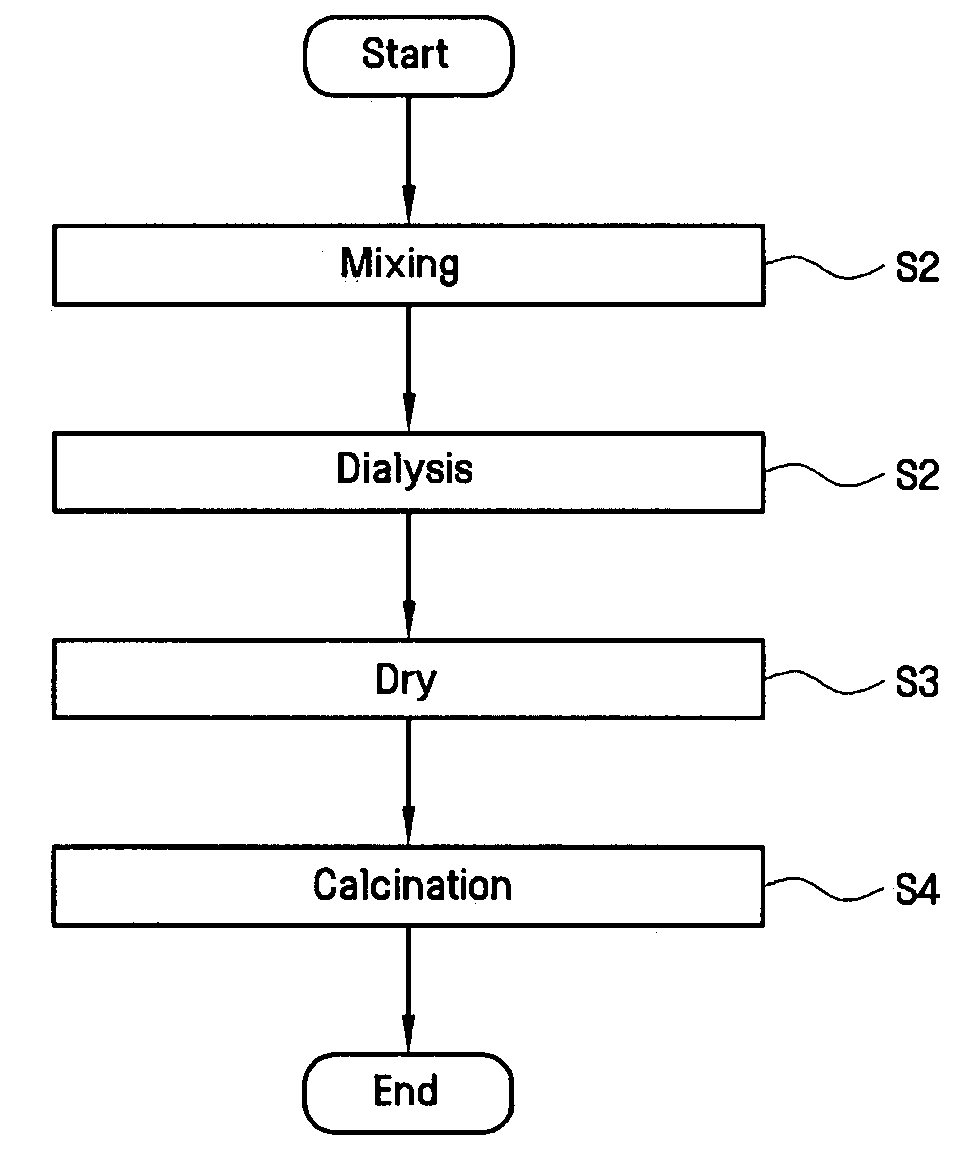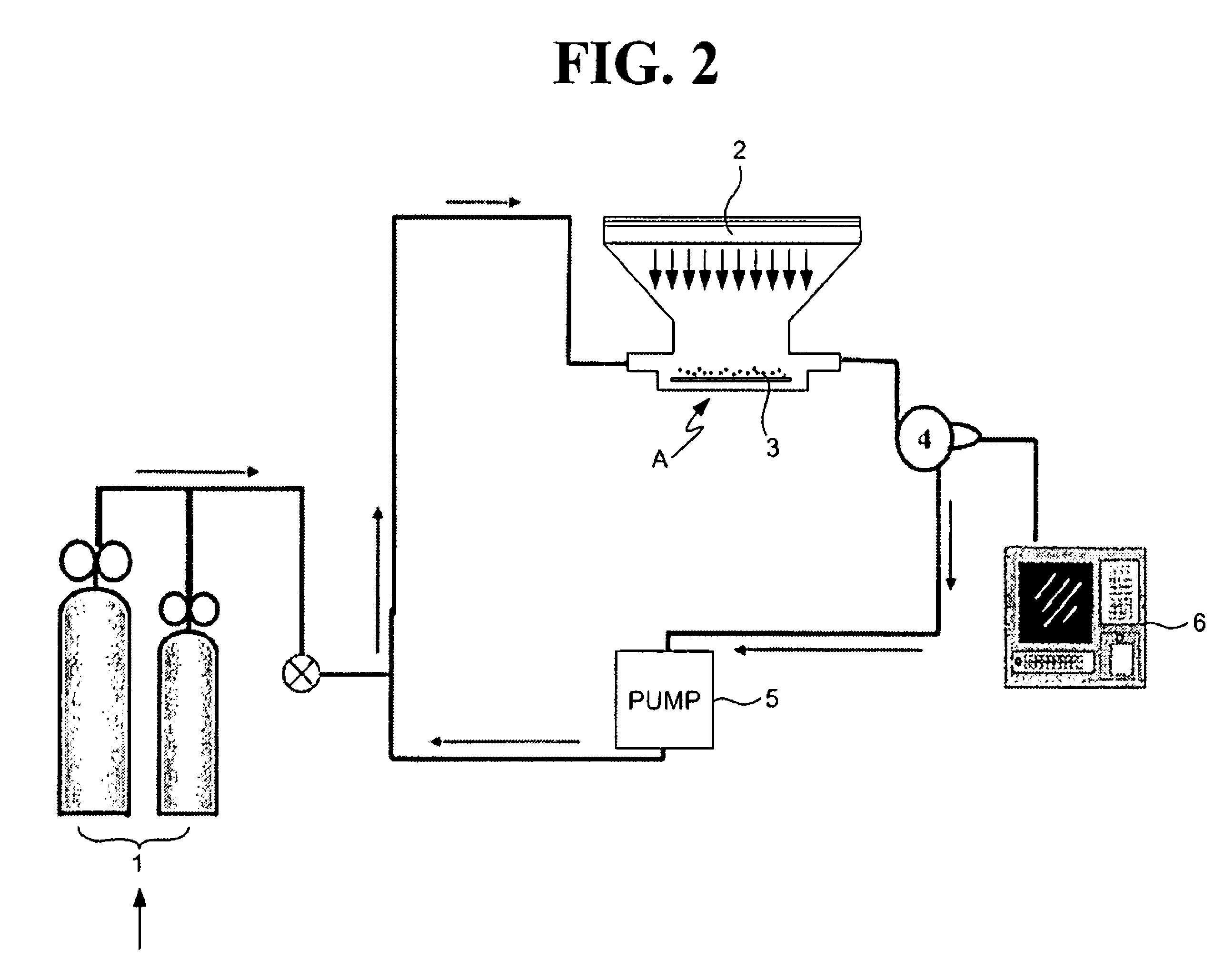Photocatalyst materials having semiconductor characteristics and methods for manufacturing and using the same
a photocatalyst and semiconductor technology, applied in the field of air purification technology, can solve the problems of reducing the oxidation capacity of the activated photocatalyst, the sol-gel doping method is a complicated and long process, and the prior art technique suffers from numerous limitations, drawbacks and disadvantages, etc., to achieve rapid and effective oxidation, strong oxidation capability, and effective decomposition and removal from the environment
- Summary
- Abstract
- Description
- Claims
- Application Information
AI Technical Summary
Benefits of technology
Problems solved by technology
Method used
Image
Examples
example 1
[0060]This illustrative example demonstrates the preparation of a first photocatalyst in accordance with this invention. The completed first photocatalyst consists essentially of titanium dioxide (TiO2) with interstitial iron (Fe) ions dispersed through the TiO2 lattice.
[0061]Four aqueous solutions of iron chloride (FeCl2) in distilled water were prepared as follows:
[0062]Example 1a: 0.1 mol % FeCl2
[0063]Example 1b: 0.5 mol % FeCl2
[0064]Example 1c: 1 mol % FeCl2
[0065]Example 1d: 10 mol % FeCl2
[0066]Titanium chloride (TiCl4) was mixed into each of the four iron chloride solutions (step S1) and allowed to mix for a period of about 1 hour. Next, the S2 dialysis step was performed on each of the four mixtures for a period of about 1 hour in order to form sols. Next, the S3 vacuum drying step was performed on each of the four sols at a pressure of about 10−3 to about 10−4 torr and at a temperature of about 10° C. to about 20° C.
[0067]The resulting four photocatalyst products were eac...
example 2
[0068]This illustrative example demonstrates the preparation of a second photocatalyst in accordance with this invention. The completed second photocatalyst consists essentially of titanium dioxide (TiO2) with interstitial tungsten (W) ions dispersed throughout the TiO2 lattice. This example was carried out in the same manner as described above for Example 1 except that four aqueous solutions of tungsten chloride (WCl2) were substituted for the aqueous solutions of iron chloride. These sixteen completed photocatalyst products were used to carry out subsequent experimental testing as described below.
example 3
[0069]This example illustrates the relationship between mean particle size of the photocatalyst and the concentration of the second metal ion under conditions of different calcinations step temperatures. In these tests, particle sizes were measured using a dynamic light scattering method. The results of this experimental testing are illustrated in FIGS. 3A to 3D, as described below.
[0070]FIG. 3A shows the relationship between mean particle size and the second-metal ion concentration for the iron-doped and tungsten-doped titanium dioxide photocatalysts of Examples 1 and 2 “before calcination.”FIG. 3A shows that, at each of the four tested mol % concentrations for both the iron-doped and tungsten-doped photocatalysts, the mean particle size was well below 10 nm. FIG. 3B shows similar results but with slightly higher mean particle sizes following calcination at 100° C. FIG. 3C also shows results generally similar to FIGS. 3A and 3B with calcination carried out at 300° C.; but in FIG. 3...
PUM
| Property | Measurement | Unit |
|---|---|---|
| mean particle diameter | aaaaa | aaaaa |
| temperature | aaaaa | aaaaa |
| pressure | aaaaa | aaaaa |
Abstract
Description
Claims
Application Information
 Login to View More
Login to View More - R&D
- Intellectual Property
- Life Sciences
- Materials
- Tech Scout
- Unparalleled Data Quality
- Higher Quality Content
- 60% Fewer Hallucinations
Browse by: Latest US Patents, China's latest patents, Technical Efficacy Thesaurus, Application Domain, Technology Topic, Popular Technical Reports.
© 2025 PatSnap. All rights reserved.Legal|Privacy policy|Modern Slavery Act Transparency Statement|Sitemap|About US| Contact US: help@patsnap.com



